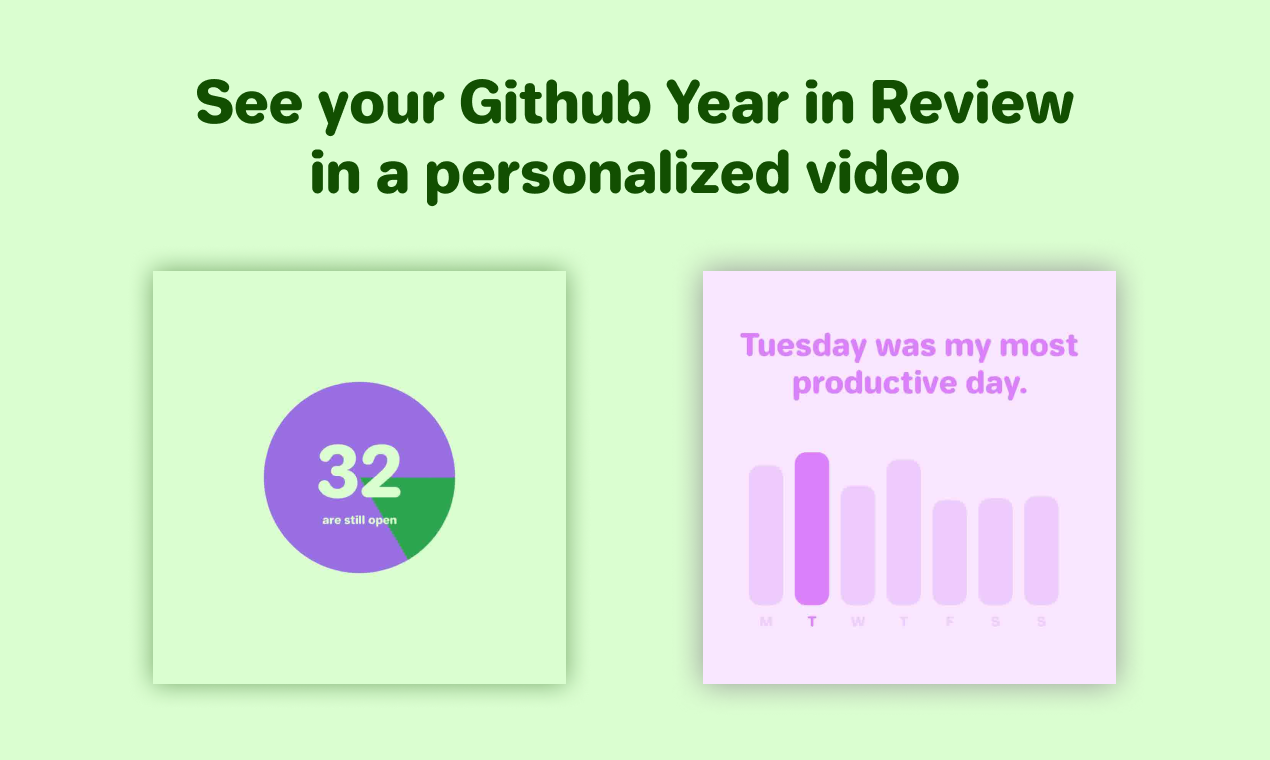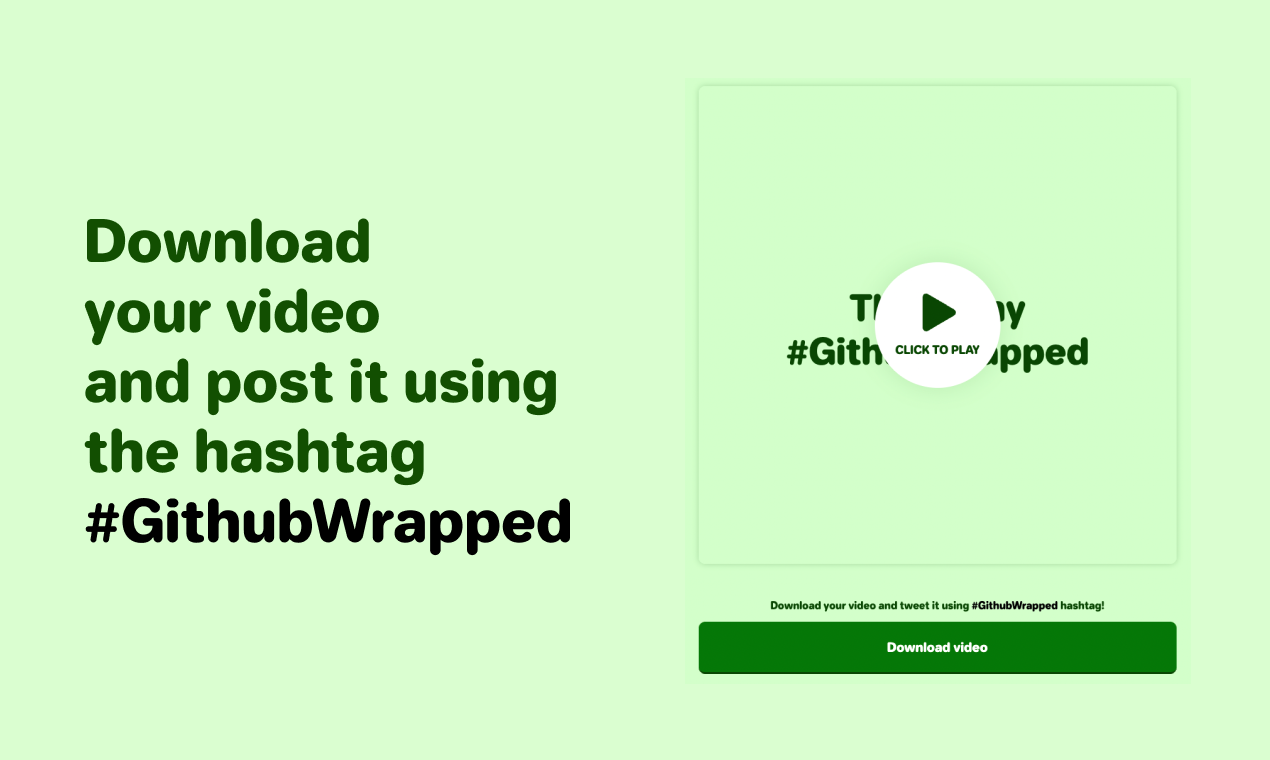 This is the repo for the 2021 version. Go to the 2022 version!
This is the repo for the 2021 version. Go to the 2022 version!
Try it out live: https://githubunwrapped.com
A platform that generates a year in review video for each GitHub user. Built with Next.JS, Remotion and AWS Lambda.
To allow hundreds of people to render their video at the same time, we applied multiple strategies for scaling:
- Caching the video whenever possible. Before each render, a database lock is created to avoid multiple renders for the same GitHub user to be accidentally created.
- A random region will be selected for each render to distribute renders to avoid hitting the concurrency limit.
- Two AWS sub-accounts are used for rendering which each have their own concurrency limit of 1000 functions in parallel per region. In hindsight, it would have been easier to ask AWS for an increase.
- Run
yarnto install dependencies. - Rename
.env.exampleto.env - Set up your AWS account according to the Remotion Lambda Setup guide. We use multiple accounts for load-balancing:
- Use
AWS_KEY_1instead ofREMOTION_AWS_ACCESS_KEY_IDandAWS_SECRET_1instead ofREMOTION_AWS_SECRET_ACCESS_KEY. - You can use
AWS_KEY_2andAWS_SECRET_2to load-balance between two accounts, or paste the same credentials as before to use the same account. - In
src/set-env-for-key.ts, we rotate the environment variables.
- Use
- Deploy the functions into your AWS account(s):
yarn deploy - For caching the videos and GitHub API responses, set up a MongoDB (I use a free MongoDB Atlas Cloud instance) to save the videos. Set the connection string as
MONGO_URL - For fetching data from GitHub, create a personal access token in your user settings and set it as
GITHUB_TOKEN.
You now have all environment variables.
Run the web app:
npm run devEdit the template in the Remotion preview:
npm run previewTo deploy, connect your repository to Vercel or Heroku.
Don't forget to also set the environment variables there too.
The code in this repository: Licensed under MIT.
The Remotion library: Notice that for some entities a company license is needed. Read the terms here.


